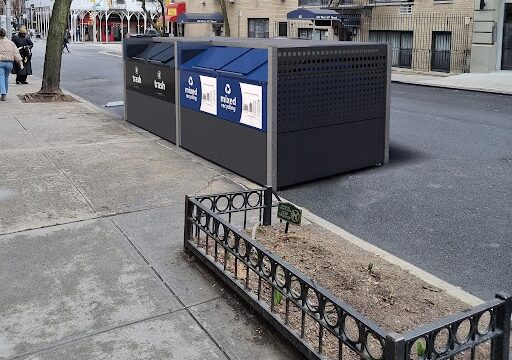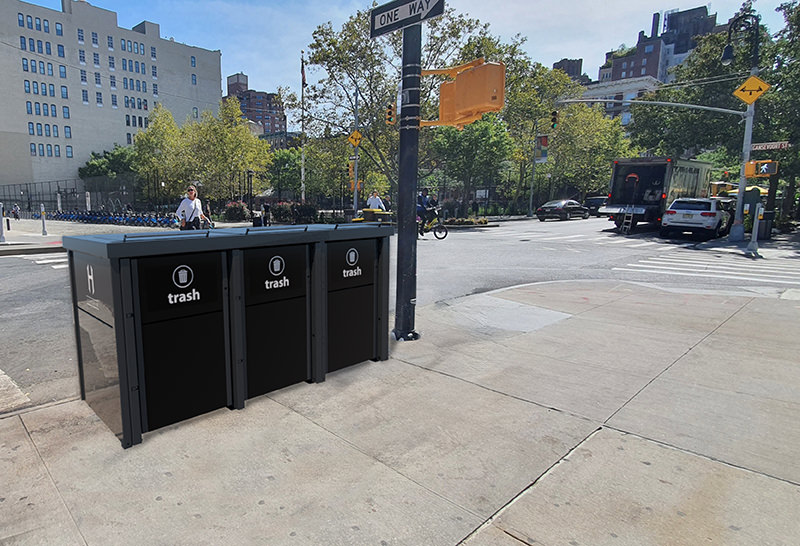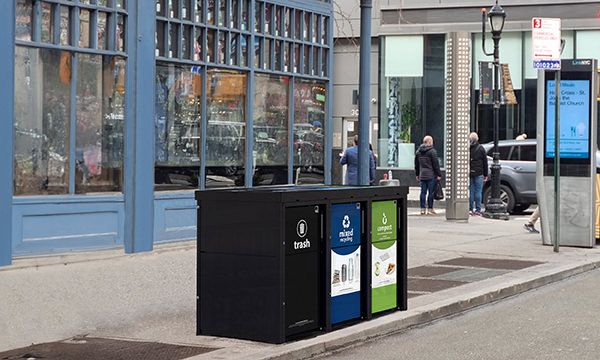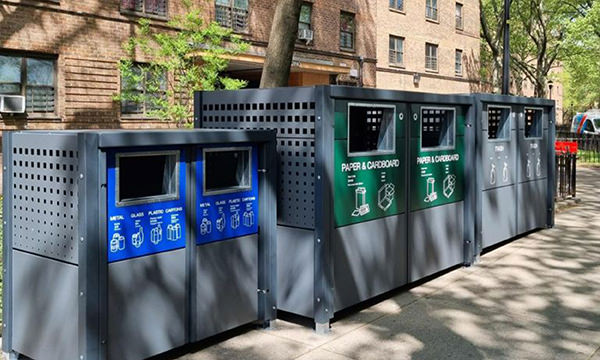

Preventing Pedestrian Litter & Trash on Downtown Streets & Sidewalks
Downtown streets that are safe, clean, and free from litter or trash help create positive environments for better public health while encouraging a sense of community responsibility.
Preventing pedestrian litter & street trash relies on the availability of durable and secure, large capacity containers that are placed in high foot-traffic locations, and combine clear and informative graphics with hygienic, user-friendly operation.
In downtown neighborhoods; typically high-density settings, on-street space is usually designed to enable ease of access for vehicles like cars and delivery trucks, and assist through-traffic. Sidewalks are often busy and narrow with restricted available space that can be occupied with competing demands from pedestrians, residents, and local businesses.
The manner in which households and businesses dispose of their trash and the efficiency of collection programs can have a real impact on the cleanliness and level of litter in the surrounding neighborhood. Mounds of unsightly trash bags on sidewalks awaiting pickup can quickly lead to issues like split bags leaking onto the street and foul odors, attracting rodents and scavenging birds to a ready food source. Most have embraced trash containerization in an effort to reduce these impacts, and this is a key step in preventing pedestrian litter.
Encouraging positive waste management behavior from pedestrians relies largely on making it as easy as possible for people to do the right thing. If trash containers exist as more of an afterthought in a location away from busy pedestrian through-routes, chances are that it won’t encourage consistent use or be serviced regularly. Combine that with a potential mound of side waste lying around it, and individuals are more likely to be encouraged to add to this, leading to an untidy and unhygienic environment.
For municipal organizations and city authorities, stopping pedestrian street trash, reducing the cost factor involved in cleaning up the streets, and promoting environmental responsibility relies notably on well-designed waste & recycling infrastructure, supported by a framework that considers the challenges involved to help deliver effective, preventative solutions. This includes:




